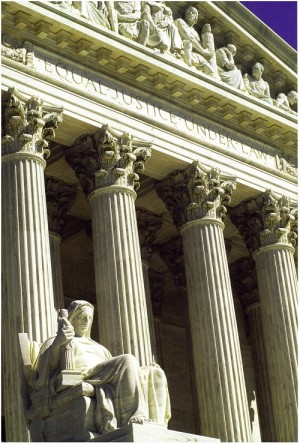By Justice Sandra Day O'Connor
Fair and Independent Courts
September 1, 2006

Transcript
(Excerpt)
Sandra Day O'Connor, a Fellow of the American Academy since 2007, served as an Associate Justice of the U.S. Supreme Court from 1981 until her retirement in 2006. The first woman to serve on the Court, she is the author of ''The Majesty of the Law: Reflections of a Supreme Court Justice" (with Craig Joyce, 2003 ) and " Lazy B: Growing Up on a Cattle Ranch in the American South west" (with H. Alan Day, 2002).
© 2008 by the American Academy of Arts & Sciences
More than one hundred years ago Roscoe Pound delivered an important address to the American Bar Association called "The Causes of Popular Dis satisfaction with the Administration of Justice."1 In that address, Pound, who would later become dean of the Harvard Law School, warned his audience, " [W]e must not be deceived... into overlook ing or underrating the real and serious dissatisfaction with courts and lack of respect for the law, which exists in the United States today."2 I believe that Pound's words apply with at least equal force today as they did in 1906.
The United States has promoted the notion of the rule of law as a means for helping to ensure peace and democracy around the world. In our work with emerging nations and with the breakup of the Soviet Union, we have continual ly advocated the importance of the rule of law. One necessary component to achieving the rule of law, of course, is a fair, impartial, and independent judiciary. The United States 's federal judiciary has been the envy of the world for many
